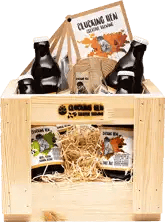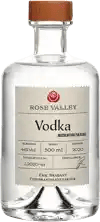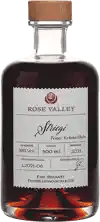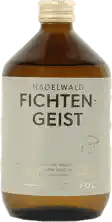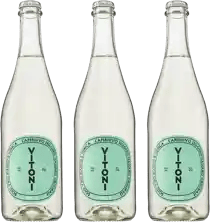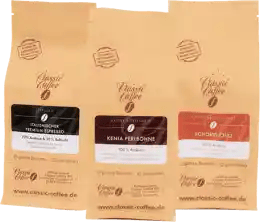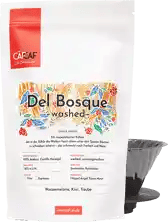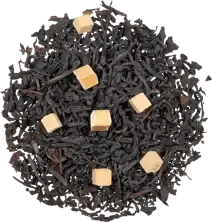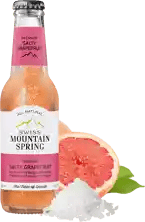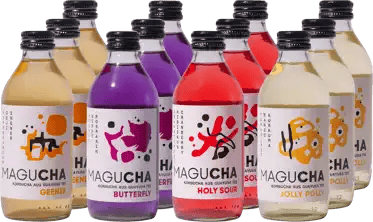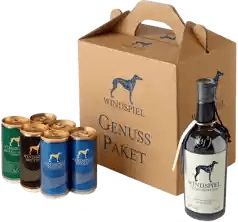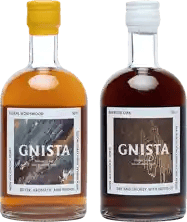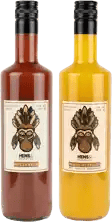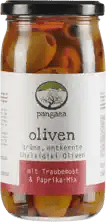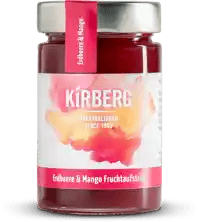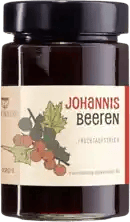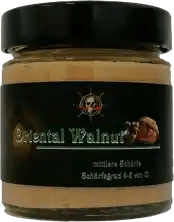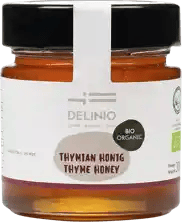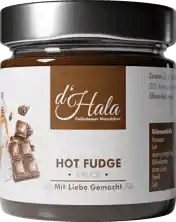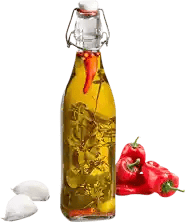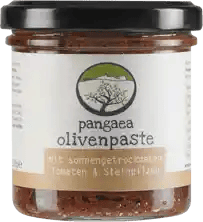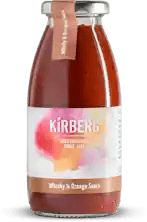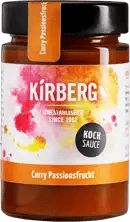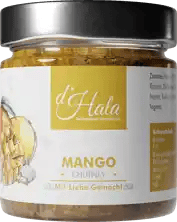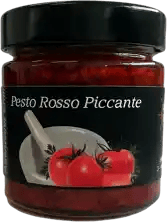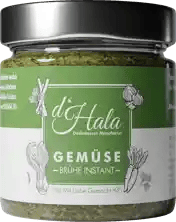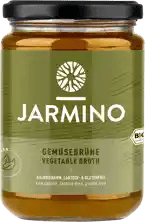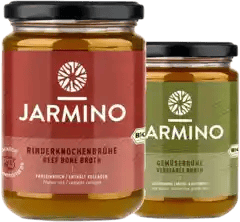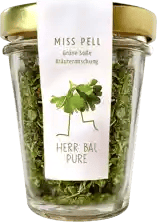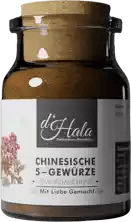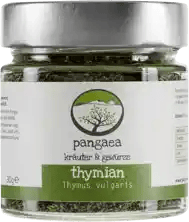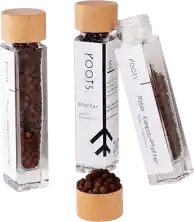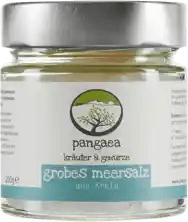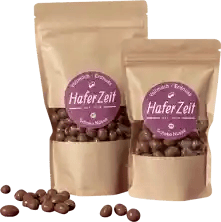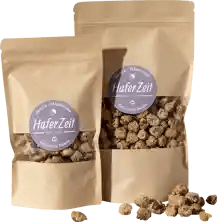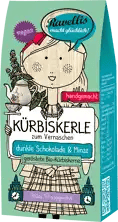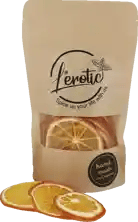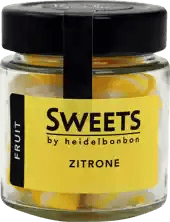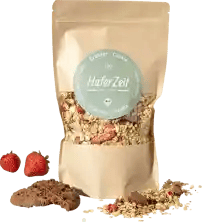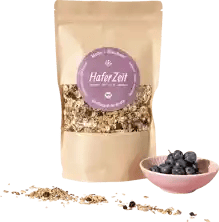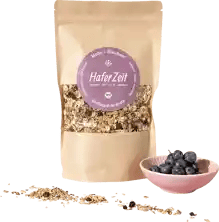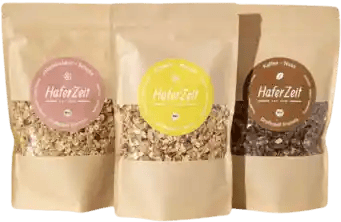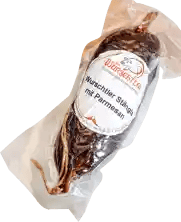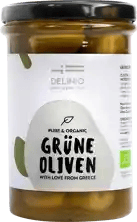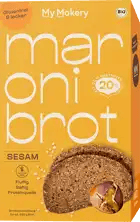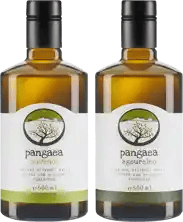Quality instead of quantity!
7,000 independent products
No mainstream
7,000 independent products
Buy spices - directly from regional manufacturers
Imagine traveling through the world of flavors without leaving your home. This is exactly what spices from regional manufacturers offer you. Here you will find a variety that goes far beyond the usual supermarket range. Genuine craftsmanship meets traditional production methods, and the result? A firework of flavor for your kitchen! You order directly from independent suppliers that you won't find in normal shops.
Buy over 300 spices online from the manufacturer
Whether hot, sweet, exotic or earthy - our selection of spices leaves nothing to be desired. Directly from the manufacturers to your home. This not only means fresh quality, but also that you know exactly where your spices come from.
With over 300 varieties, we offer you a world full of flavor experiences. From universally popular classics to rare specialties - discover new favorite spices and enrich your kitchen with unique flavors.
What is the difference between supermarket and manufactured spices?
Manufactured spices are often hand-picked and come from small, specialized businesses. They score points for freshness and a more intense flavor. This contrasts with mass-produced products from the supermarket, which often lose their aroma due to long storage times.
The quality of manufactured spices is usually higher, as no pesticides or artificial additives are used. This not only makes them superior in taste, but also healthier. You can taste the difference!
What's more, by buying manufactured spices, you are supporting small businesses and their crafts. In this way, you are helping to preserve traditional production methods and regional economic cycles.
How do you recognize high-quality spices?
You can recognize high-quality spices by their intense aroma and bright color. They should look fresh and not faded. The texture also provides information: good spices are neither too finely ground nor too coarse.
Pay attention to the packaging - it should be airtight to preserve the aroma. Information about the origin and production process are also indicators of quality.
Last but not least, taste is crucial. High-quality spices develop a full-bodied, complex aroma that elevates your dishes to a new level.
What do spices taste like?
Spices can cover a range of flavors: from sweet and floral to spicy and smoky. Each spice has its own distinctive flavor that adds depth and character to dishes.
Some spices, such as cinnamon or vanilla, have a natural sweetness that enriches desserts and pastries. Others, such as paprika or curry, bring warmth and spiciness to savory dishes.
Exotic spices such as cardamom, saffron or galangal open the door to new worlds of flavor. They give every dish a special touch and turn cooking into a culinary adventure.
What are spices?
Spices are the little heroes in the kitchen that turn simple dishes into something special. They usually come from plants: Roots, barks, seeds, flowers or fruits that are dried and processed to add flavor and aroma.
The right use of spices can completely change the flavor of a dish. Not only do they add variety to your cooking, they often have health benefits too. So spices are much more than just flavor - they are a journey of discovery for the senses!
Sweet spices versus savory spices
Sweet spices such as cinnamon, vanilla or nutmeg are perfect for desserts, cakes or drinks. They give desserts a special touch and can also add a surprising twist to savory dishes.
Hearty spices, on the other hand, such as rosemary, thyme or garlic powder, are the stars in savory dishes. They add depth and spice to meat dishes, soups and stews.
The key lies in balance: the right blend of sweet and savory spices can transform a dish from ordinary to extraordinary.
Spices for hot and cold dishes: are there differences?
Yes, there are differences! Certain spices develop their flavor better in warm dishes. Their essential oils are released during cooking or baking, which provides a more intense flavor. Examples are bay leaf, turmeric and cumin.
Other spices are particularly suitable for cold dishes. Fresh herbs such as basil, dill or mint add freshness and lightness to salads, dips and cold sauces.
There are also all-rounders that work well in both hot and cold dishes. One example of this is black pepper, which can be used universally and adds a spicy note to almost any dish.
How do I know which spice to use for what?
This is a question of experience and experimentation. A good place to start is to try classic combinations - such as basil with tomatoes or cinnamon with apples.
Find out about the origin of the spices and which dishes are typical in these regions. This will give you an idea of how you can use them.
Ultimately, it's all about experimenting and developing your own taste. Have the courage to try new things - that's the beauty of cooking!
Which spices you should have at home
A few basic spices are recommended for versatile cooking: Salt, pepper, paprika, garlic and onion powder, oregano, basil and thyme are a good start.
Add a few exotic spices for that certain something: cardamom, turmeric, cinnamon and nutmeg are versatile and add variety to your plate.
A small supply of fresh herbs such as parsley, chives or coriander is also always a good idea. They add freshness and color to dishes.
Which countries do most spices come from?
Spices are ambassadors for their home countries and tell of distant cultures and traditions. Most of the spices we use today have their origins in Asia, India and Africa - regions that are known for their rich variety of spices.
These countries offer ideal climatic conditions for the cultivation of spice plants. From the warm and humid regions of Asia to the arid regions of Africa, each environment produces unique spices that are deeply rooted in the local cuisine.
Global connectivity and trade have allowed us to enjoy these treasures from around the world and enrich our cooking with a wealth of flavors.
The most famous Asian spices
Asian spices are known for their versatility and intensity. The stars include ginger, cardamom, turmeric and lemongrass. They are fundamental to many Asian dishes and give them their characteristic flavor.
In Asian cuisine, spices are often combined to create complex flavor profiles. These spices are not only exciting in terms of taste, but often have health benefits too.
The best-known Indian spices
Indian spices are famous worldwide for their color and depth of flavor. Classics such as coriander, cumin, mustard seeds and asafoetida are indispensable in Indian cuisine.
The art of Indian spice blending, known as masala, is an integral part of the country's culinary traditions. These spices not only add flavor, but also warmth and well-being to any dish.
The best-known African spices
African spices reflect the diversity of the continent. Barberry, ras el-hanout and harissa are just a few examples of spices that are deeply rooted in the African cooking tradition.
They are known for their earthy, smoky aromas and their ability to give dishes a strong and distinctive flavor. In African cuisine, spices are often used to enhance hearty stews and meat dishes.
Which spices are the most popular?
Spices are not only diverse in their flavors, but also in their popularity. While some spices can be found in almost every cuisine around the world, others have their niche in specific culinary traditions. The most popular spices are often those that offer flexibility and a distinctive flavor.
Some spices, such as pepper, paprika and garlic, have established themselves as indispensable in many cuisines thanks to their ability to add depth and character to a wide range of dishes. Others, such as saffron and vanilla, are prized for their unique flavor and rarity.
The popularity of spices changes with culinary trends and global cuisine, but the classics remain consistently popular.
The most popular spices in Germany
In Germany, spices such as pepper, paprika, nutmeg and bay leaf are particularly popular. They are integral parts of traditional German cuisine and give dishes such as stews, roasts and pastries their characteristic flavor.
The 10 most important spices for cooking
For every amateur chef, there is a basic set of spices that no kitchen should be without. These include: Salt, pepper, paprika, oregano, thyme, basil, cumin, turmeric, garlic powder and cinnamon. With this selection, you are well equipped to refine and experiment with a variety of dishes.
Spice blends: A mix for the best flavor
Spice bl ends are an art in themselves. They combine different spices to create a harmonious yet complex flavor that individual spices alone could not achieve. From classic blends such as curry or garam masala to creative, original creations - the possibilities are endless.
These blends are not only practical because they save time and simplify seasoning, but they also open doors to new worlds of flavor. With a well-chosen spice blend, you can easily bring international cuisine into your home.
What spice blends are available?
The selection of spice blends is huge. The best-known include curry powder, Italian herb mix, Cajun spice, ras el hanout and garam masala. Each of these blends has its own character and is suitable for different dishes and cooking styles.
Many countries and regions have their own characteristic spice blends that are deeply rooted in their culinary tradition. These blends reflect local tastes and preferences and are an easy way to experience authentic flavors.
How are spice blends put together?
Putting together a spice blend requires knowledge and flair. It's about finding the right balance so that no one spice overpowers another. The blend should be harmonious and the different flavors should complement each other.
Traditional blends often follow centuries-old recipes that have stood the test of time. Modern creations, on the other hand, experiment with new combinations to create unique taste experiences.
The secret lies in understanding the characteristics of each spice - how it interacts with heat, how it combines with other flavors and how it comes into its own in the final dish.
How are spices made?
Making spices is a fascinating process that depends on the type of spice. Some spices, such as peppercorns or mustard seeds, are dried and used whole or ground. Others, such as ginger or turmeric, are grated or processed into powder.
The process often begins with drying, which is done either naturally under the sun or with the help of machines. This preserves the spice and intensifies its flavor. Depending on the spice, this is followed by further processing steps such as grinding or mixing.
The aim is always to get the best out of the spice - its unmistakable taste, aroma and color.
Difference between ground, rubbed and chopped
Ground spices are finely ground and offer an intense aroma. They are ideal when a uniform taste is desired in the dish. Shredded spices, on the other hand, are more coarsely ground and are suitable for dishes where you want to feel the spice pieces.
Chopped spices are in larger pieces and are often used in dishes that cook slowly. They release their flavor gradually and are ideal for stews and roasts.
The choice between ground, rubbed and sliced depends on the dish and the desired flavor experience.
Spice grinder and mortar
A spice grinder is a practical tool for freshly grinding spices. Freshly ground spices have a more intense aroma than pre-ground spices. A mortar, on the other hand, is perfect for crushing spices and releasing their essential oils.
Both tools allow you to determine the texture and fineness of your spices yourself and get the maximum flavor out of them.
Difference between herbs and spices
The main difference between herbs and spices lies in their origin. Herbs come from the leaves of green plants and are used fresh or dried. Spices, on the other hand, come from other parts of the plant such as roots, barks, seeds or fruits.
Are spices healthy?
Spices are not only flavor enhancers, but often also have health benefits. Many spices contain antioxidants, vitamins and minerals that can contribute to general health.
Some spices have anti-inflammatory properties and can help with digestion. Others, such as cinnamon or turmeric, have positive effects on blood sugar levels and the immune system.
However, it is important to use spices in moderation, as they can also have undesirable effects in high quantities. As with everything, the same applies here: The dose makes the poison.
Are spices anti-inflammatory?
Yes, some spices have anti-inflammatory properties. Turmeric, ginger and cinnamon are well-known examples. These spices can help to reduce inflammation in the body and thus help to relieve pain and other ailments.
The anti-inflammatory effect of spices makes them an interesting part of a healthy diet, especially for people with chronic inflammatory diseases.
What is the best way to store spices?
Storing spices correctly is crucial to preserving their aroma and freshness. It is best to store spices in airtight containers in a cool, dry place. Light, heat and moisture are enemies of spice flavors and should be avoided.
Glass containers with dark glass are ideal as they block out the light. Make sure that your spices are not stored directly above the stove or near damp areas such as sinks.
Regularly checking and refreshing your spice supply helps to ensure you always have the best flavor in your dishes.
What is the shelf life of spices?
Spices don't have an expiration date in the conventional sense, but they do lose their flavor and aroma over time. Ground spices usually keep for 6 to 12 months, while whole spices can retain their flavor for up to three years.
It is important to pay attention to changes in color, smell and taste. If a spice tastes bland or has lost its aroma, it is time to replace it.
To ensure maximum shelf life, store spices in a cool, dry and dark place as mentioned above.
List of the most important spices in European cuisine
- Pepper
- salt
- Thyme
- Oregano
- marjoram
- rosemary
- basil
- parsley
- Coriander
- garlic
- Onions
- cinnamon
- cloves
- nutmeg
- cardamom
- caraway
- ginger
- turmeric
- paprika
- chili pepper
- mustard
- dill
- mugwort
- Bay leaves
- fennel
- mint
- sage
- Cumin
- savory
- Juniper berries
- rock salt
- saffron
- vanilla
- White peppercorns
- Lemon peel
- Orange peel
- Lemon thyme
- Lemon verbena
- aniseed
- Mace
- Sea salt
- Red peppercorns
- Star anise
- Cumin seeds
- Cardamom seeds
- Fenugreek
- Curry powder
- White mustard seeds
- Garlic powder
- Chili powder
- Allspice
- Lemon pepper
- Sage leaves
- Chervil
- wasabi
- wormwood
- Lavender flowers
- Thyme leaves
- Dried onions
- Allspice grains
- Lovage
- Dried parsley
- Lemon balm
- Juniper leaves
- Curry leaves
- Chili flakes
- Cumin powder
- Ginger powder
- paprika powder
- Garlic granules
- Onion powder
- Rose petals
- fennel seeds
- dill seeds
- parsley
- Black cumin seeds
- Herbs of Provence
- Hot paprika powder
- Celery powder
- Carrot powder
History of the spice trade
The history of the spice trade is as old as civilization itself. Even in ancient times, spices were coveted commodities that were transported around the world on the silk and spice routes.
Spices were often so valuable that they were used as currency or as gifts for kings and rulers. The trade in spices has shaped the history of many regions and was an important factor in the development of global trade.
The search for new sources of spices was one of the main reasons for the great voyages of discovery and led to the emergence of new trade routes and the networking of continents.
In Europe, the demand for spices such as pepper, cinnamon and cloves led to a veritable spice revolution. These spices, which originally came from Asia and the Spice Islands, became a symbol of wealth and status.
Control of the spice trade was often a central point of conflict between European powers. The Netherlands, Portugal and later England led the way in opening up and controlling the spice routes, which led to political and military conflicts.
In the Middle Ages, the high prices of imported spices led to the development of local spice alternatives in Europe. This contributed to the diversification of European cuisine and meant that spices gradually became accessible to broader sections of the population.
Today, the spice trade is still an important industry, but with a stronger focus on sustainability and ethical trade. Global networking has made it possible for spices from all over the world to be easily accessible and continue to connect cuisines and cultures.
Brilliant!

Bitte bestätige deine Anmeldung noch eben - du hast eine Bestätigungsmail von uns. Klicke darin auf den Link. Danach bekommst du deinen Rabattgutschein.




